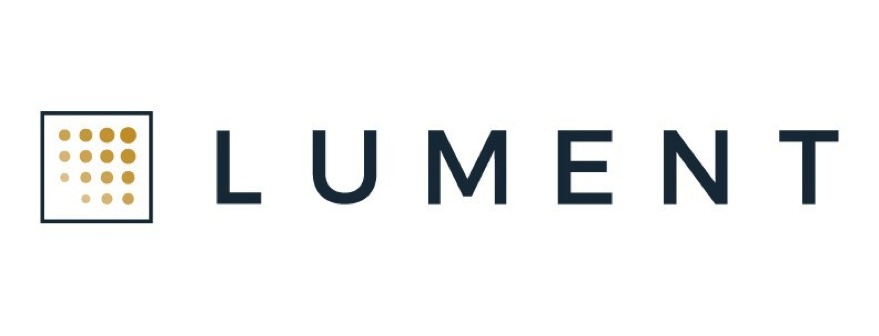Lument’s Vic Clark Discusses the Changing Apartment Property Markets


Lument Research recently spoke with Vic Clark, Lument’s Senior Managing Director and Chief Production Officer, about developments in the multifamily property markets. As both an investor in the multifamily asset class and a lender to it, Vic is uniquely qualified to shed light on the twists and turns of the increasingly competitive acquisition market and ways Lument’s borrower clients can navigate these unsettled waters.
The conversation was prompted by significant interest rate increases during the spring, the concurrent growth in transaction share by real estate investment trusts and fund managers, and the deceleration of single asset transaction volume
Lument Research: Thanks for taking some time from your busy schedule to help us better understand the shifting landscape of the apartment investment market. Our launch point was the May 2022 Real Capital Analytics U.S. Apartment Capital Trends Report that covered apartment transaction activity for the first five months of the year. We thought readers would find your take on the events highlighted in the report interesting and any suggestions you may have valuable for prospective buyers using traditional mortgage financing in the hyper-competitive multifamily property markets.
In the Capital Trends report, RCA points out that while sales volume in the spring increased relative to 2021, the rate of volume growth decreased, particularly when compared to the unprecedented levels observed in the fourth quarter last year. Is this deceleration entirely attributable to rising interest rates or are other factors at work?
Vic Clark: Market fundamentals are still extremely strong. There is a shortage of housing in this country, and I don’t find any reason to believe the problem will be resolved soon, whether we enter a recession or not.
Because of the shortage, investors still have a huge appetite for apartments, and there is a ton of money on the sidelines that is earmarked for multifamily and will be put to work. Inflation only increases the appeal of the asset class because of the short terms of apartment leases.
I would confirm, decelerating volume growth is almost entirely a product of higher rates. And I think we’re likely to be having the same discussion next spring, maybe longer. We’re in the first stage of this rising rate cycle and interest costs will continue to be an obstacle to getting deals done into next year.
But rates aren’t the only issue. Risk appetite among debt providers is lower now than it was six months ago. Buyers are looking for leverage in order to compete for assets, and it’s much harder now than last year to get a 75 percent or 80 percent LTV loan to do a value-add acquisition, especially, or even a stabilized asset. Buyers looking to use low leverage have a big advantage for this reason.
LR: The data in the report and other reportage on RCA’s web site indicate that private real estate investment trusts and investment management companies, like Starwood and Blackrock, gained acquisition share, boosted by large entity level buys, while single asset sales volume was flat. What are the factors underlying the trend?
VC: There are a couple of factors working to the advantage of the REITs and funds. First, asset prices have increased by two times, sometimes by three times, in the last six or seven years. A standard Dallas or Austin garden apartment that may have traded for $20 million in 2017, could go for $50 or $60 million now. You need to be huge, have a huge balance sheet, to be able to finance a deal like that with only 55 percent or 65 percent leverage, and it’s an advantage to be able to raise money directly in the capital markets.
Timing is another factor. You have a short window to pull together a credible financing package in today’s property market. In many cases, it’s a challenge for buyers using conventional financing to keep up with competitors with tens of billions of assets under management.
LR: How can single asset buyers that rely on secured mortgage capital to finance acquisitions increase the likelihood of success in competitive property bidding situations? How can Lument help?
VC: Having a close relationship with your capital partner is essential. When your lender is a partner rather than merely a capital provider it provides a huge advantage. This is how we’ve approached this business, and I think it’s been key to the success we’ve achieved.
Bridge financing is a crucial tool in the box. Acquirers can achieve higher LTVs and more proceeds from bridge lenders than in the permanent debt market, and in many cases, they gain access to the funding sooner. Borrowers may be able to extend bridge loan maturities beyond the typical three or four years in order to fully realize value-add rent bumps before seeking to place permanent debt. Lument closed more than $2 billion of bridge debt in the last 12 months, and we have appetite for a lot more.
Bridges generally are structured with floating rates. With the Fed’s rate posture, borrowers must buy interest rate caps to hedge index risk, and hedges are very expensive now. Buyers and their bankers need to vigilantly stay abreast of cap and swap costs, stay on their toes and act as a team to be ready to execute when cap costs moderate. With a dedicated trading desk Lument can help its clients to grab hedging opportunities when they arise.
Interest only periods can help, too, when using permanent debt. A five-year or seven-year IO period can increase loan proceeds significantly. Having the right banker at your side can make a big difference in negotiating the best loan terms including the IO term.
I also have found that private borrowers have more success when they invest outside the box. For example, an area that deserves more attention than it gets is adaptive reuse – specifically converting offices to apartments. Under-occupied offices can be converted into high demand micro-apartments. You don’t need much concrete or sheetrock for this kind of deal; just add floors and appliances and you have a very marketable commodity at a lower cost basis than ground up construction. Developers who have this skill set and can deliver affordable urban space have unlimited prospects, and they won’t have to go toe to toe with a fund manager with $20 trillion of money under management to buy the property.
Honestly, Lument has the best collection of financing product specialists in the industry, and we would be a great financing partner for owners pursuing niche opportunities. Whether it’s one of the FHA programs, whether it’s micro units or single-family build-to-rents or manufactured housing we have an originator in the house who is one of a handful of subject matter experts in the country.
LR: The report states that buyers concentrated on Southeast, Mountain and Southwest markets, the places that are benefiting most from domestic migration patterns since the onset of the public health emergency. As a result, cap rates in these regions declined 40 basis points on average and even more in the most avidly pursued markets like Phoenix, Orlando and Tampa. Have we reached the point where the coastal primary markets offer investors better relative value than the Sunbelt growth markets, even though they trade to lower cap rates? Are buyers missing opportunities in other regions of the country, like the Mid-Atlantic and Midwest, where cap rates are higher?
VC: I really don’t think so. The growth markets still offer better value. Population migration is the driver. People are moving to states that do not charge state income tax – Arizona, Florida, Tennessee, Texas – and offer more affordable housing. Housing isn’t as affordable as it once was, but it still compares favorably to the places most of the movers come from. Plenty of value-add and stabilized opportunities remain.
As prices rise and the economy slows, maybe investment opportunities in places like Dallas by necessity will become more local in a way. They’ll be more micro-focused on where corporate relocations and new expansions will be located.
If the economy really slows down, we may have to focus more on announced hiring plans like we did ten or twelve years ago rather than rely on a broad assumption that employment will grow throughout the metro area so only the quality of the asset and neighborhood really matters. For example, Goldman Sachs is going to move between 2,500 to 5,000 employees to Dallas, near Uptown. It may make sense for developers to work directly with the company to build new income-matched housing nearby or repurpose existing structures to accommodate relocating workers.
Regulatory issues are another concern that favor the Sunbelt growth markets, especially Texas, which can be a crucial factor for value-add buyers. Whether it relates to rent control or evictions the operating environment in the growth markets is more favorable to the property owner.
The big challenge now is to build something affordable. If you can, and you have it financed by Fannie or Freddie, you will have hit a home run. I think this blueprint is much more easily executed in the growth markets than the coastal primary markets.
Are buyers missing opportunities elsewhere? Perhaps, it’s kind of a cap rate play. I think there are good niche situations, but over-all the Sunbelt markets continue to offer the best value creation opportunities, particularly for value-add buyers, and better long-term prospects due to migration and job growth.
LR: The RCA report notes that the share of sales proceeds this year attributable to mid- and high-rise property acquisitions increased significantly relative to garden properties. Is this merely a function of increased institutional participation in the apartment property market or are other factors at work?
VC: Well, institutional participation has something to do with it, certainly, but it seems market driven, too–that we have reached a point where there is better relative value in elevator buildings than suburban gardens. For example, I am aware of a reinforced concrete high-rise building in Chicago, only about ten years old. It was available for about $325,000 per unit. When you looked at it though, the replacement cost of this building was much, much higher due to rising land, labor and material costs. That was the value proposition.
I don’t think this is uncommon and is, to some extent, driving the increase in elevator building sales. Long-term owners of these buildings in many cases consider this a good time to sell, while buyers are attracted by prices that are well below replacement costs. You don’t find this sort of value support in stick-built suburban gardens at current prices, unless the properties are much older.
LR: The Treasury yield curve recently inverted between 2s and 10s, and considering hawkish sentiments expressed by some Federal Reserve Board governors the curve may grow more inverted in coming months. How should investors adjust to the situation? How can Lument help prospective acquirers make these adjustments and use the yield curve to their advantage?
VC: Yeah, there isn’t an easy answer to this one. Traditionally, the inverted curve indicates that forward rates will moderate. In many cases, we could structure a floating rate bridge note and hedge with a two-year cap with the expectation that we would have the option to refi into a fixed permanent at a lower note rate when the cap expired. The cost of caps is unusually high now though, unfortunately, so this isn’t an attractive option for the time being. Patience is maybe the best thing we can advise.
For now, buyers with ready access to equity will be at a competitive advantage. For others, assets with assumable debt may be the best option.
LR: That’s all I have Vic. Thanks again for your time and all your valuable insights. I look forward to our next opportunity.
VC: You’re welcome and take care.